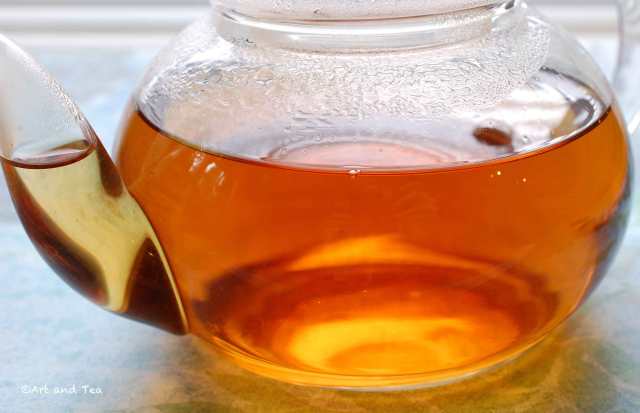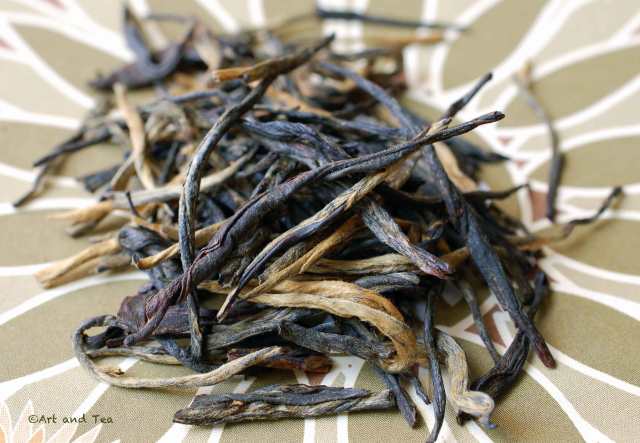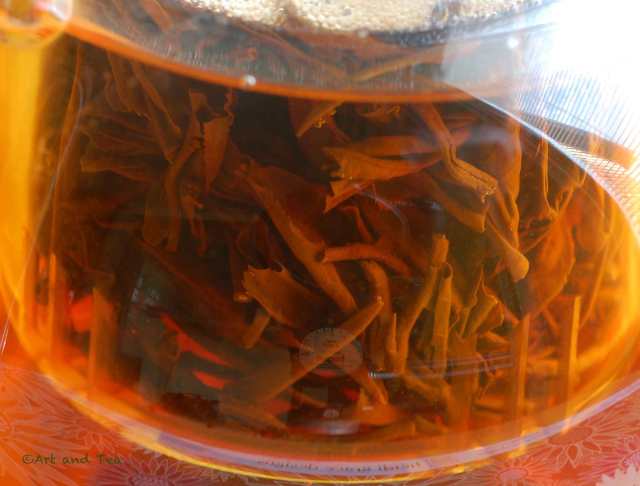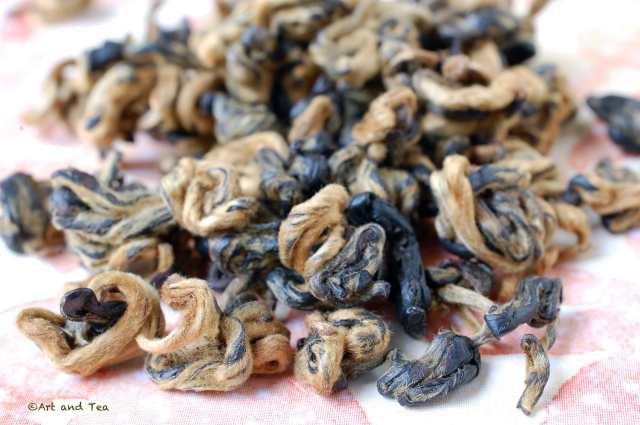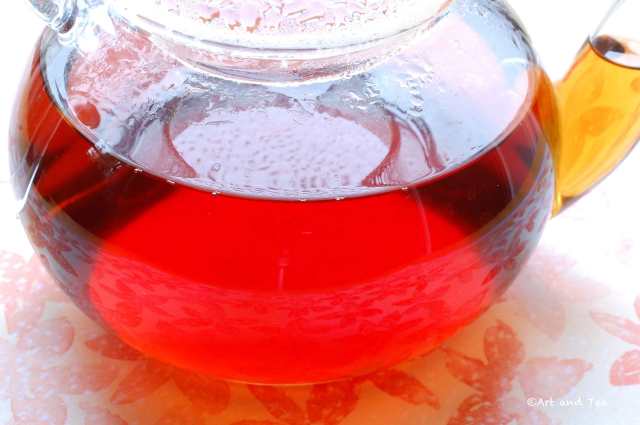Good morning, dear tea friends! It’s lovely to be back with you, sharing and enjoying another cup of tea. We’re embraced by sultry July weather here in New England, with temps and humidity both in the 90s. I’m camped up in my 2nd floor studio room, gazing out at the leaden sky and savoring a pot of China Oolong Choicest Organic, a more oxidized (60-70%) Oolong, processed in the style of a Bai Hao (white tip or white hair).
This tea comes from Huangshan (the Yellow mountains) in southern Anhui province. This mountain range is named after the mythical Yellow Emperor, Huang Di, who ruled from 2698-2598 BC. This is a land of uniquely-shaped pine trees twisting out of towering rock formations, swimming in a sea of clouds. In my mind’s eye, I can imagine the venerable old tea bushes growing here and there in the rock crevices.
I steeped the leaves for 4 minutes in 190F water.
The golden amber liquor is fragrant with notes of peach and honey. mmmmmm…..
The cup is quite smooth with a pronounced honey flavor. As the tea cools, ripe stone fruit notes come forward, enhanced by the honey sweetness.
With its sweet, fruity character, this Oolong would make a great iced tea for these sweltering days of summer. Or, enjoy it hot as I’m doing. I find that sipping hot tea on a hot day refreshes me, rather than making me hotter.
It was great to join you for another cup of tea. As my long-time tea friend and kindred spirit, Anna, always says: Enjoy your next cup!
“Courage and perseverance have a magical talisman, before which difficulties disappear and obstacles vanish into air.”
~John Quincy Adams
